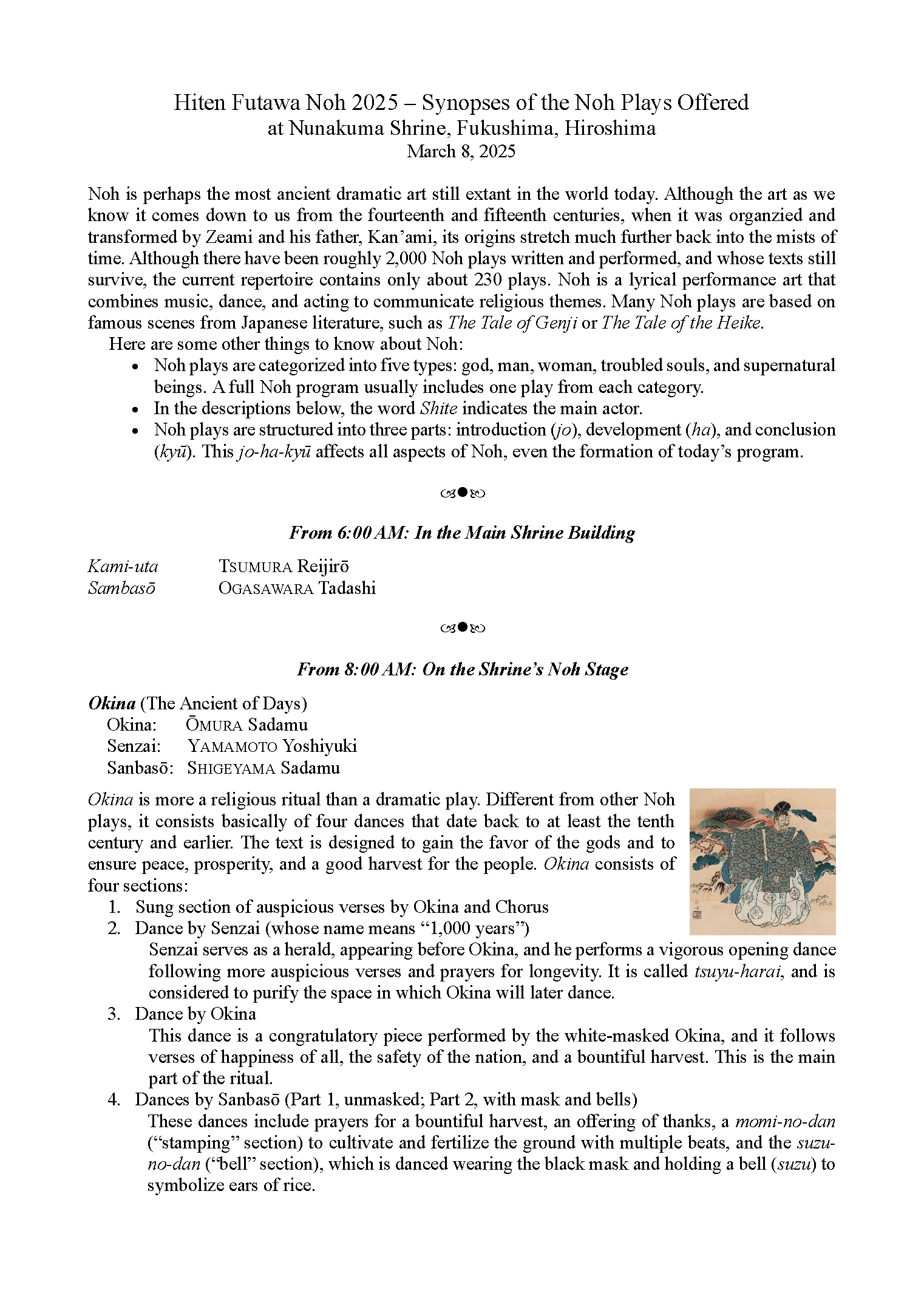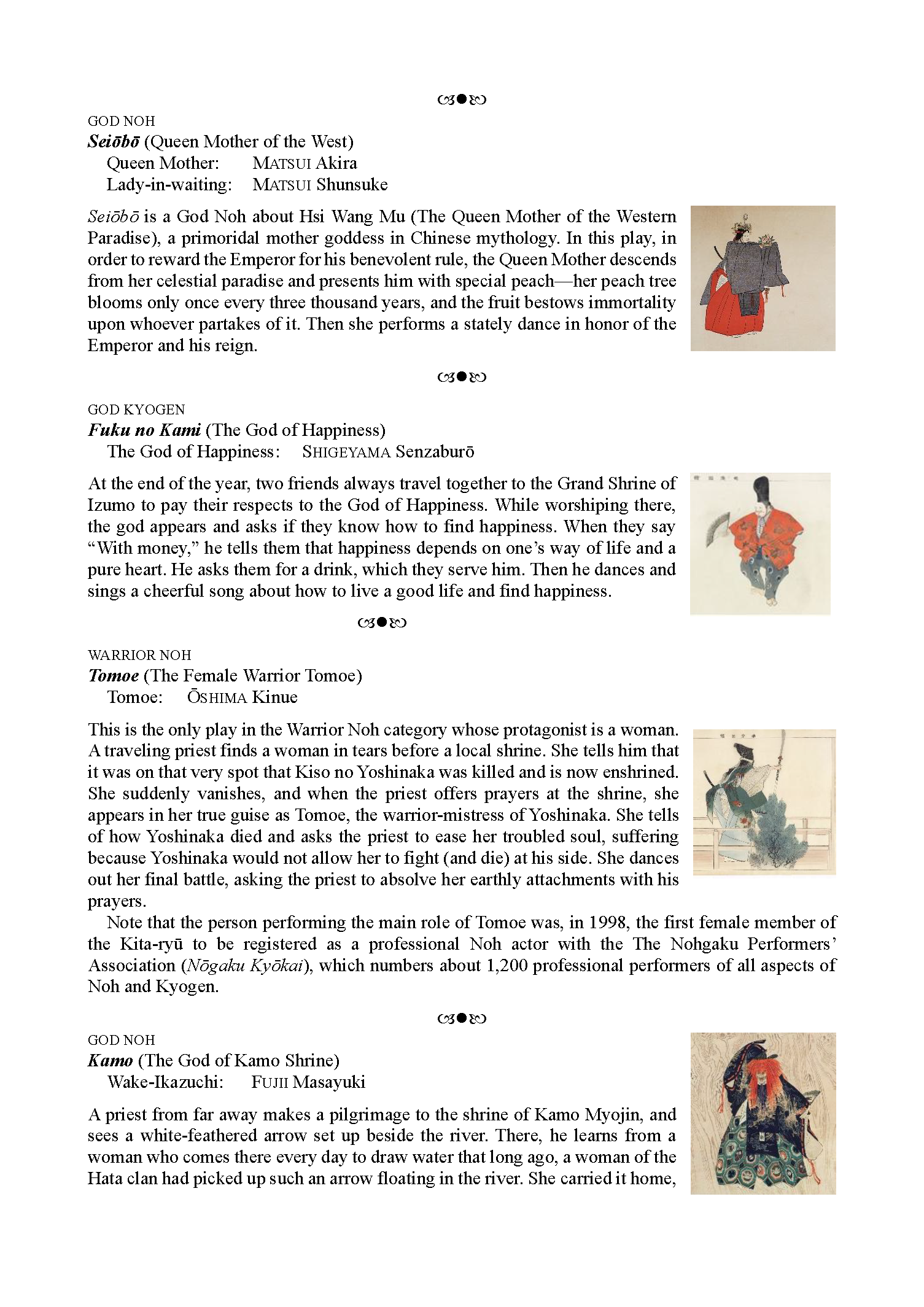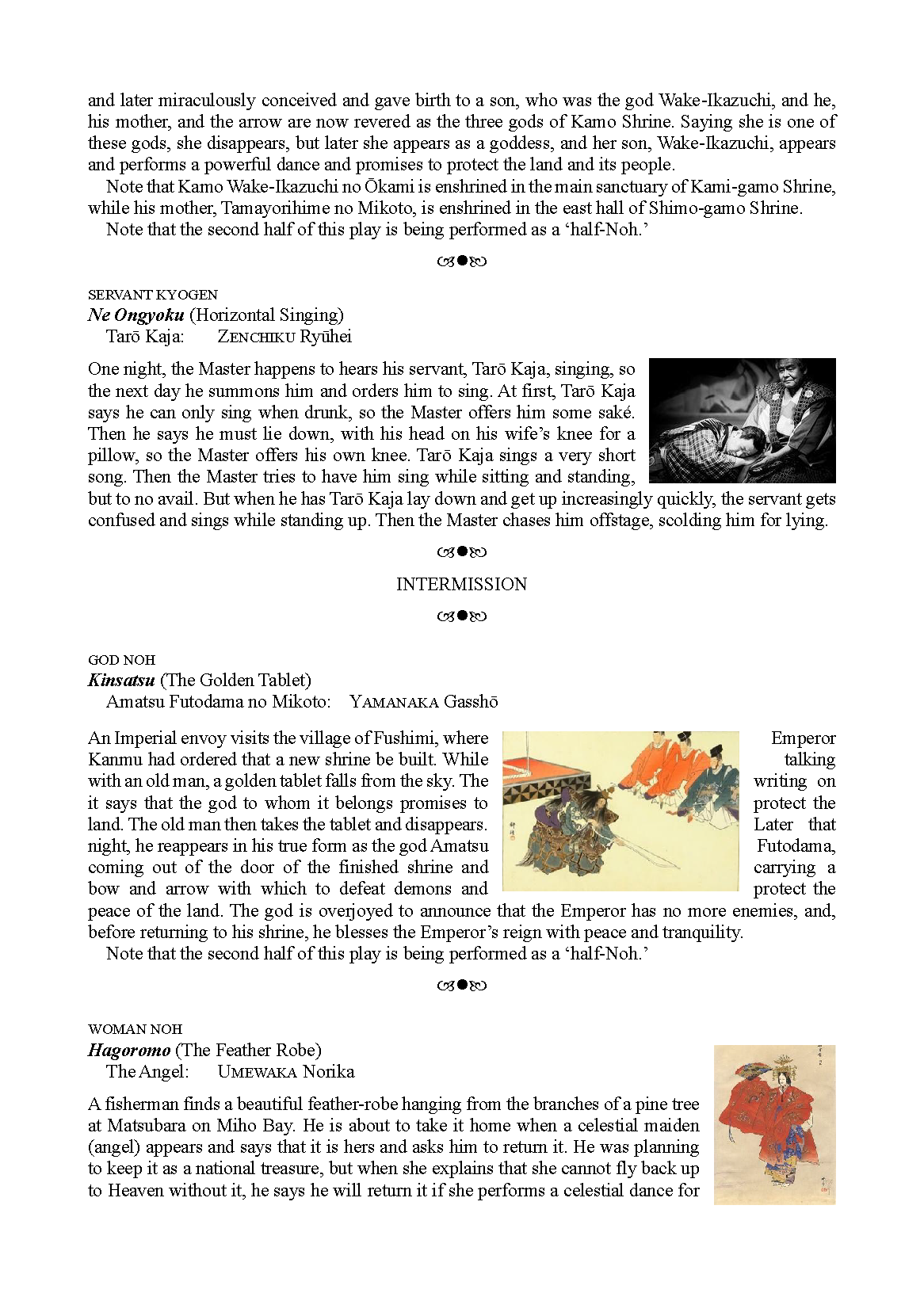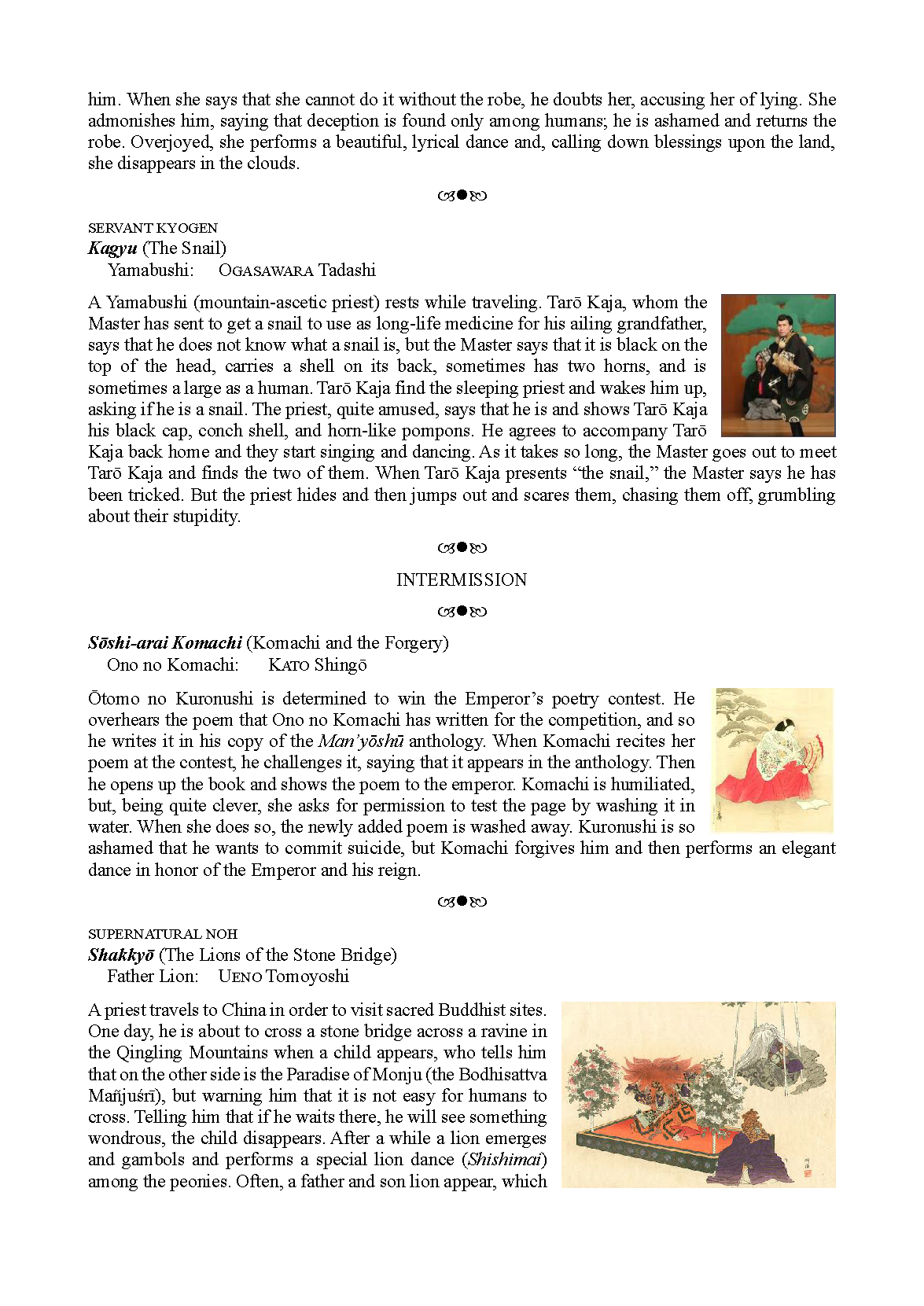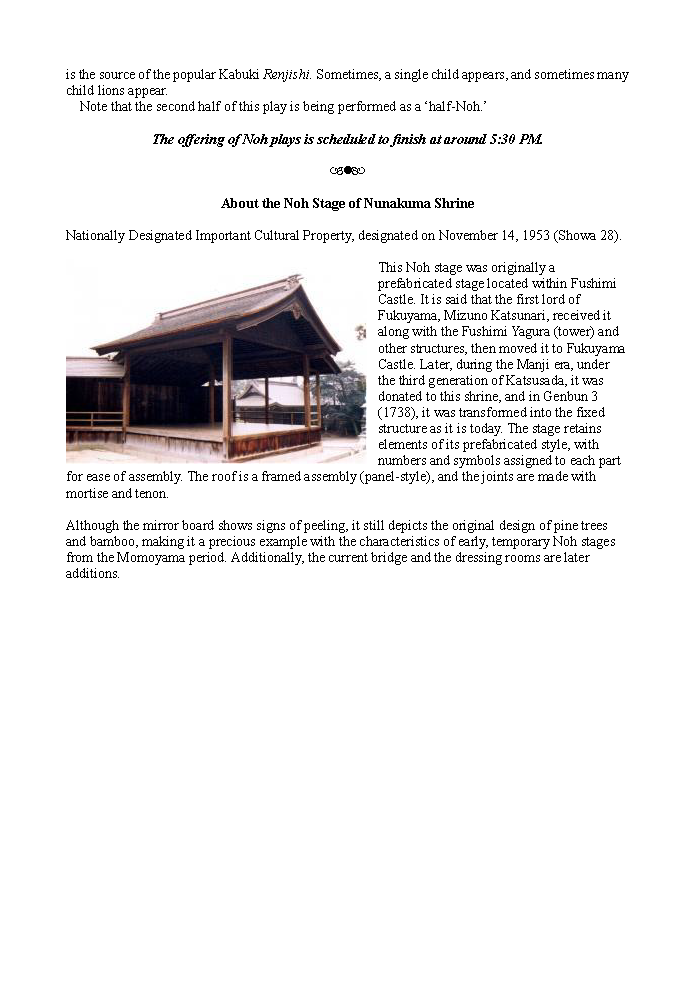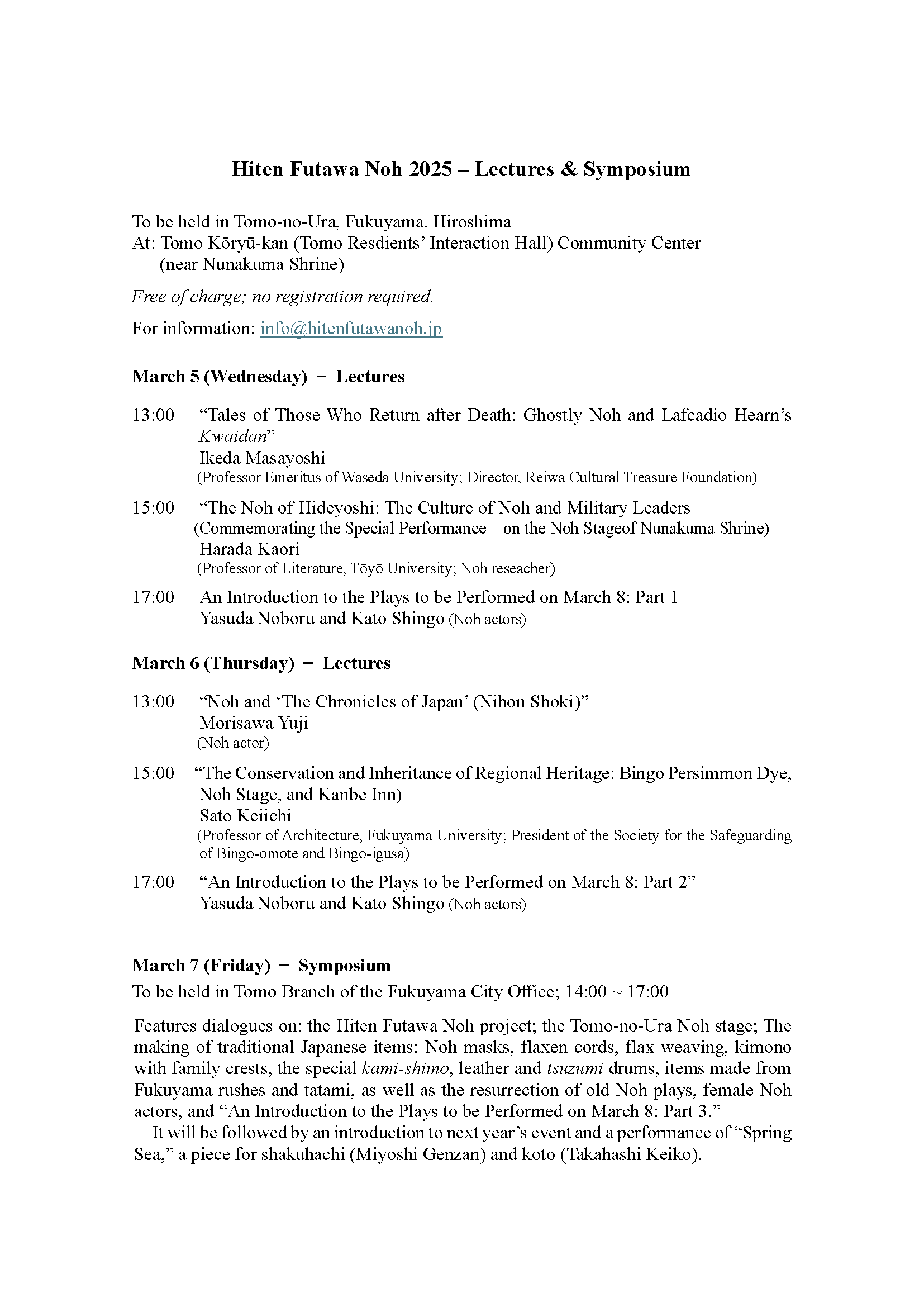Hiten Futawa Noh 2025 – Synopses of the Noh Plays Offered
at Nunakuma Shrine, Fukushima, Hiroshima March 8, 2025
For more information and to apply,
please visit www.hitenfutawanoh.jp.
Noh is perhaps the most ancient dramatic art still extant in the world today. Although the art as we know it comes down to us from the fourteenth and fifteenth centuries, when it was organzied and transformed by Zeami and his father, Kan’ami, its origins stretch much further back into the mists of time. Although there have been roughly 2,000 Noh plays written and performed, and whose texts still survive, the current repertoire contains only about 230 plays. Noh is a lyrical performance art that combines music, dance, and acting to communicate religious themes. Many Noh plays are based on famous scenes from Japanese literature, such as The Tale of Genji or The Tale of the Heike.
Here are some other things to know about Noh:
- Noh plays are categorized into five types: god, man, woman, troubled souls, and supernatural beings. A full Noh program usually includes one play from each category.
- In the descriptions below, the word Shite indicates the main actor.
- Noh plays are structured into three parts: introduction (jo), development (ha), and conclusion (kyū). This jo-ha-kyū affects all aspects of Noh, even the formation of today’s program.
